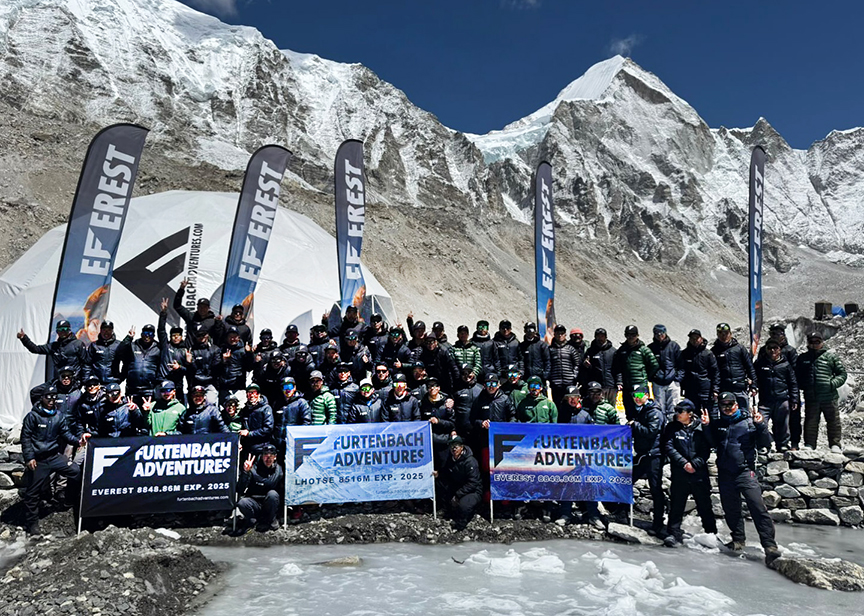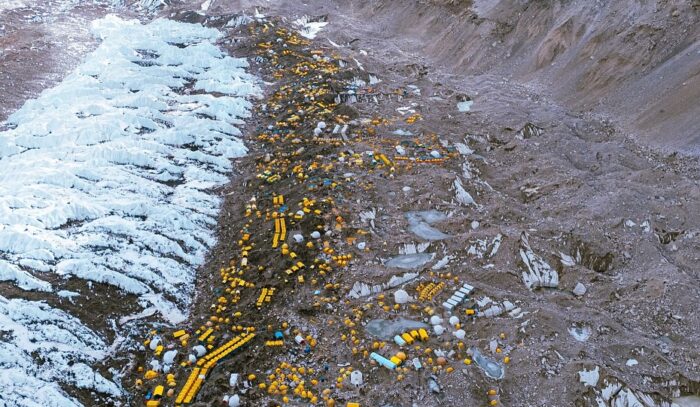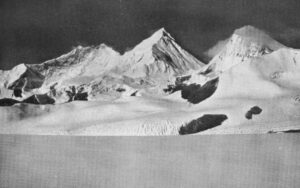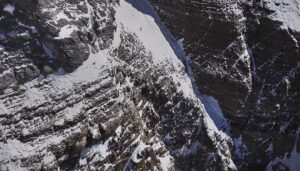While a snowy spell keeps climbers in Base Camp this week, the Nepal Parliament is considering a new law to regulate the highest mountain on Earth.
The so-called Integrated Tourism Bill reached Nepal’s upper House of Parliament on April 18. It includes measures aimed to “address the issue of overcrowding, enhance climber safety, and mitigate ecological concerns on Everest,” according to an article in The Kathmandu Post.
This sort of news is familiar from previous years. Typically, well-meaning or well-sounding laws are proposed to radically alter the business of Everest climbing in the name of safety and the environment. They never get far. Small adjustments that do make it through usually benefit the local expedition operators.
For now, the initial proposed law includes what sounds like some potentially strong measures. Let’s look at them more closely:
Digging deeper
1. Everest climbers must have previous experience at 7,000m
Many accidents have shown that previous experience at 7,000m or 8,000m does not prove a climber is skilled or self-sufficient enough to make his or her own decisions. It only ensures these climbers will buy their way onto another expedition before Everest. Because here’s the rub: The law requires that the “preparatory” 7,000m peak must be in Nepal.
Mountains like Denali, Aconcagua, or even Ama Dablam (which is slightly less than 7,000m) are not considered suitable preparation. It is little wonder that local operators approve of this idea. They are already planning to enlarge their offerings for fully supported expeditions on Nepal’s 7,000m peaks.
There are seventy-two 7,000’ers open for climbing in Nepal, not counting the secondary summits of 8,000m peaks. They range from the extremely difficult, like Jannu, to the relatively straightforward, like Himlung Himal and Baruntse. The proposal does not mention the climbing style, use of oxygen, or support.
2. All guides must be Nepalese citizens
The new proposal mandates that the guides accompanying the climbers must be Nepali citizens. Theoretically, that eliminates international mountain guides. But nothing prevents a foreign guide from climbing with a private client, as long as both have Nepali guides with them. This is already the usual strategy on expeditions. It is unclear how the law will identify a “guide” among Nepalese workers with vastly different experience at altitude.

The Sherpa team working on the South side of Everest with Furtenbach Adventures, an international expedition outfitter. Photo: Furtenbach Adventures
3. Mandatory health checks and declaring record quests
The law establishes that all Everest climbers must have a medical certificate proving they are in good health. Almost everyone already does this voluntarily. Many international outfitters insist on such precautions from potential clients. However, the certificate mentioned in the law must come from a “government-approved” medical institution, meaning it must be obtained in Nepal.
Climbers must also declare if they are pursuing any kind of mountaineering record. There is already a record-oriented market well-publicized by the outfitters (and by the climbers who attempt them). The law suggests that if force majeure — war, disaster, etc. — disrupts their climb, they won’t get a refund, but they will receive a permit valid for two years or a discounted fee for another peak.
4. New routes approved by Liaison Officer
There is an interesting note about climbers aiming for new routes on Everest, if anyone is still interested. First, they must receive permission from the Department of Tourism in advance. Second, they must stick to their planned line once on the new route.
“In emergencies, climbers can reroute, but only with the approval of a government liaison officer,” it says. This refers to an expedition’s official liaison officer (LO), a sinecure position that The Kathmandu Post calls “a form of institutional bribery.” These LOs are rarely in Base Camp.
“It is hard to picture a climber opening a new route on Everest who gets into an emergency situation and waits for a green light from a LO,” the article points out.
The proposed law contains a few other points related to garbage disposal, retrieving dead climbers, and other costs.

Everest Base Camp in 2025. About 500 foreigners are expected on the mountain. Photo: 8K Expeditions
Safety, environment, or money?
The proposal is noticeably silent on any limitations to the number of climbing permits or restrictions on how many people can climb the mountain at the same time. According to the latest update from Nepal’s Department of Tourism, there are 374 permits granted for Everest until April 21. However, The Kathmandu Post had access to the unpublished list that covers up to April 26. Just five days later, the tally had risen from 374 to 402.
Local operators expect a record year, with up to 500 foreign climbers, plus an even higher number of local staff assisting them.
In the end, the question is whether the proposed new rules are meant to improve safety and prevent pollution or to further squeeze the country’s golden goose.
This draft proposal has a long way to go. It has to be debated, modified, and then pass through the two chambers of Nepal’s parliament. Officials at the Ministry of Tourism told The Kathmandu Post that changes are likely before the final law is enacted.
After that, there is usually at least one year before the law is implemented to allow the market to adjust.
Here is a PDF of the proposed bill in Nepali.






